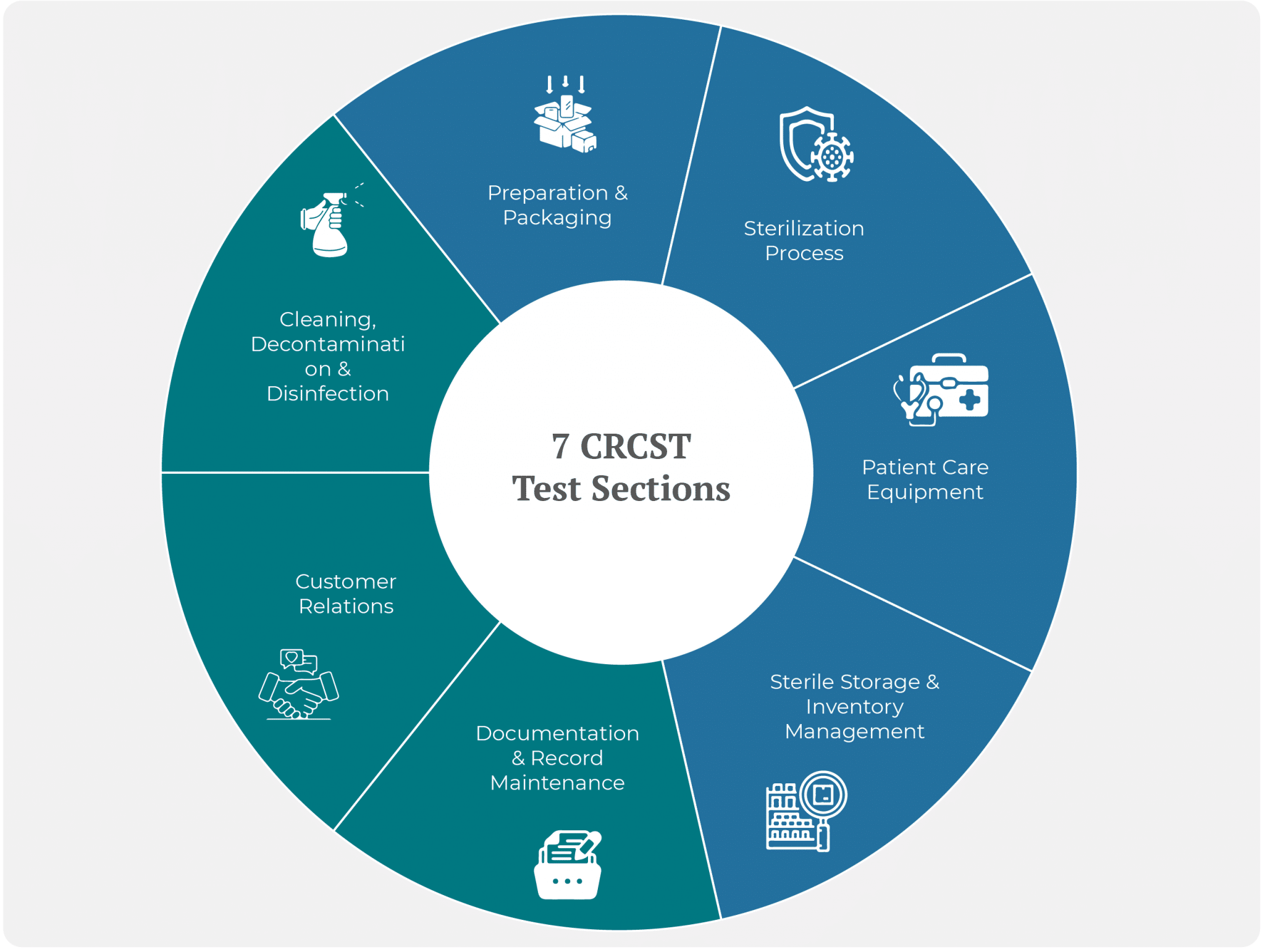
The Certified Registered Central Service Technician (CRCST) test from HSPA (Healthcare Sterile Processing Association) is part of the CRCST certification program designed to measure and recognize entry-level technicians to certify that they are capable of providing competent services as a central service/sterile processing technician.
The CRCST exam is one part of the overall certification process. In addition to passing the test, you must complete 400 hours of hands-on experience to be certified. That firsthand experience will play an important role in your test preparation. The CRCST test is taken on a computer at a testing center and costs $140 (as of March 2023).
You may be looking for an IAHCSMM practice test and only find information about HSPA practice tests. In January 2022, the IAHCSMM (International Association of Healthcare Central Service Materiel Management) was renamed HSPA (Healthcare Sterile Processing Association).
The CRCST exam has 150 multiple-choice questions. It covers 7 key areas of sterile processing, including cleaning, decontamination, disinfection, preparation, documentation, and sterilization. A score of 70% or higher is required to pass and take you a step further to an IAHCSMM CRCST certification.
Question types explained
Results scale & interpretations
Frequently asked questions
The CRCST exam has 150 multiple-choice questions. It covers 7 key areas of sterile processing, including cleaning, decontamination, disinfection, preparation, documentation, and sterilization. A score of 70% or higher is required to pass and take you a step further to an IAHCSMM CRCST certification.

The CRCST exam is a multiple-choice test, divided into 7 sections. It must be completed within 3 hours.
| Topic | Percentage Weight | Topics covered | Approximate number of questions |
|---|---|---|---|
| Cleaning, Decontamination & Disinfection | 20% | 11 | 30 |
| Preparation & Packaging | 20% | 10 | 30 |
| Sterilization Process | 20% | 14 | 30 |
| Patient Care Equipment | 10% | 8 | 15 |
| Sterile Storage & Inventory Management | 10% | 9 | 15 |
| Documentation and Record Maintenance | 10% | 3 | 15 |
| Customer Relations | 10% | 2 | 15 |
In this section of the CRCST certification test, you will be given approximately 30 multiple-choice questions covering 11 different areas. The questions are designed to measure your understanding of the topic.
The 11 topics you need to prepare for are:
This section covers 20% of your final score.
In this section of the IAHCSMM CRCST test, you will be given approximately 30 multiple-choice questions covering 10 different areas. The questions are designed to measure your understanding of the topic.
The 10 topics you need to be ready for are:
This section covers 20% of your final score.
In this section of the CRCST test, you will be given approximately 30 multiple-choice questions covering 14 different areas. The questions are designed to measure your understanding of the topic.
The 14 topics you need to be ready for are:
This section covers 20% of your final score.
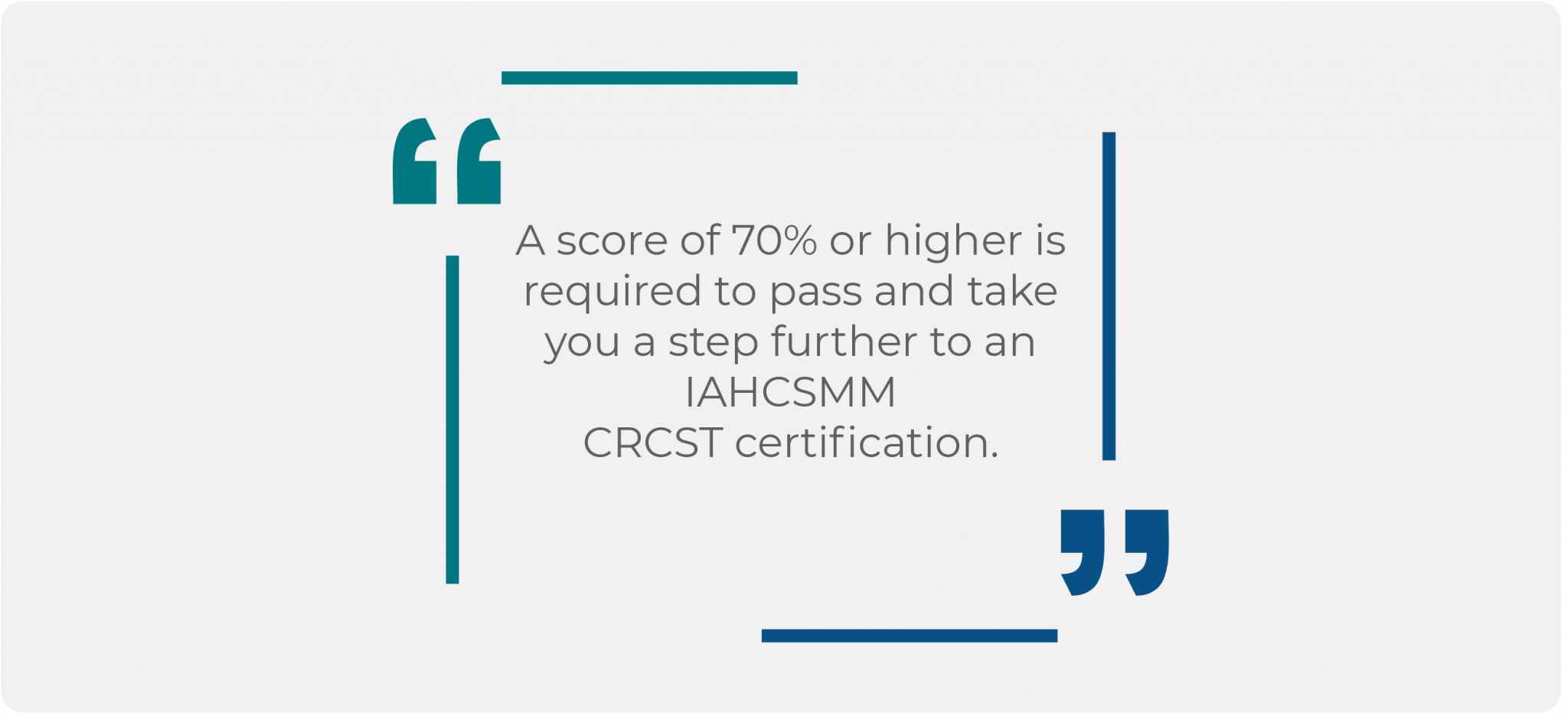
In this section of the IAHCSMM CRCST exam, you will be given approximately 15 multiple-choice questions covering 8 different areas. The questions are designed to measure your understanding of the topic.
The 8 topics you need to prepare for are:
This section covers 10% of your final score.
In this section of the CRCST exam, you will be given approximately 15 multiple-choice questions covering 9 different areas. The questions are designed to measure your understanding of the topic.
The 9 topics you need to prepare for are:
This section covers 10% of your final score.
In this section of the CRCST test, you will be given approximately 15 multiple-choice questions covering three different areas. The questions are designed to measure your understanding of the topic.
The 3 topics you need to prepare for are:
This section covers 10% of your final score.
In this section of the IAHCSMM CRCST test,, you will be given approximately 15 multiple-choice questions covering 2 different areas. The questions are designed to measure your understanding of the topic.
The 2 topics you need to prepare for are:
This section covers 10% of your final score.
Passing the CRCST exam requires extensive hands-on experience, self-study, and/or taking IAHCSMM CRCST practice tests. After passing the test, you must also have either completed 400 hours of hands-on work or completed the 400-hours of service within 6 months of passing the exam to get your CRCST certification. However, if you have the experience but do not pass the CRCST test, you will not get your IAHCSMM CRCST certification. Therefore, it is vital that you push yourself to pass the test.
Considering the work experience that is required, paying attention while doing your work and not cutting corners is the most important preparation strategy. However, there are additional things you can do to supplement your knowledge and give yourself a better chance to pass the test.
Official Courses – Purdue University offers a full course that will prepare you for the test. The Purdue course will prepare you to take the test, and they also offer an externship placement service. Purdue University charges $420 for the course, plus fees, and $300 for the externship. Passing the Purdue course will prepare you for the exam, but it does not provide the certification.
Take Online Courses – There are a number of online courses, including one offered by iPrep, that can prepare you for the CRCST test. These courses include IAHCSMM CRCST practice tests that will prepare you for the test environment.
Self Study – The IAHCSMM’s education department has developed reference materials for study. The CS Technical Manual, 8th edition, ANSI/AAMI’s ST79, and AORN’s Guidelines for Perioperative Practice can be ordered through its website and will guide your study. The HSPA’s 9th edition of the CS Technical Manual will gradually become available starting February 2023.
After taking a CRCST practice test, you should be able to identify which areas you need to focus your study time on. This will give you a better sense of what you actually know, as opposed to just feeling confident about certain sections.
Once you know which areas require additional focus, you need to create a study plan to strengthen areas where you need to improve.
While this might seem silly, there is a skill to excelling at multiple-choice questions. You have less than a minute and a half per question, making it important that you quickly read through the questions and answer choices and make a fast determination.
To be successful, you will need to learn how to eliminate options and make educated guesses. Find a guide that teaches these tricks and techniques.
Download Your Copy of the CRCST Test PDF
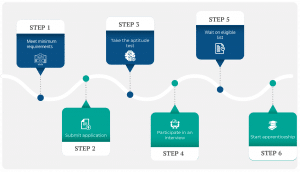
The CRCST test is given at Prometric Testing Centers and can be scheduled anytime during your eligibility period that the center is open.
Total of 150 questions
3-hour time limit
There are seven sections, ranging from 15 to 30 questions
Every question is worth the same amount of points
You may not bring anything with you into the exam room
Passing the test requires a score of 70% or better
You will need to show a picture ID to take the test, and the name on the ID must match the name on the test
The test costs $140
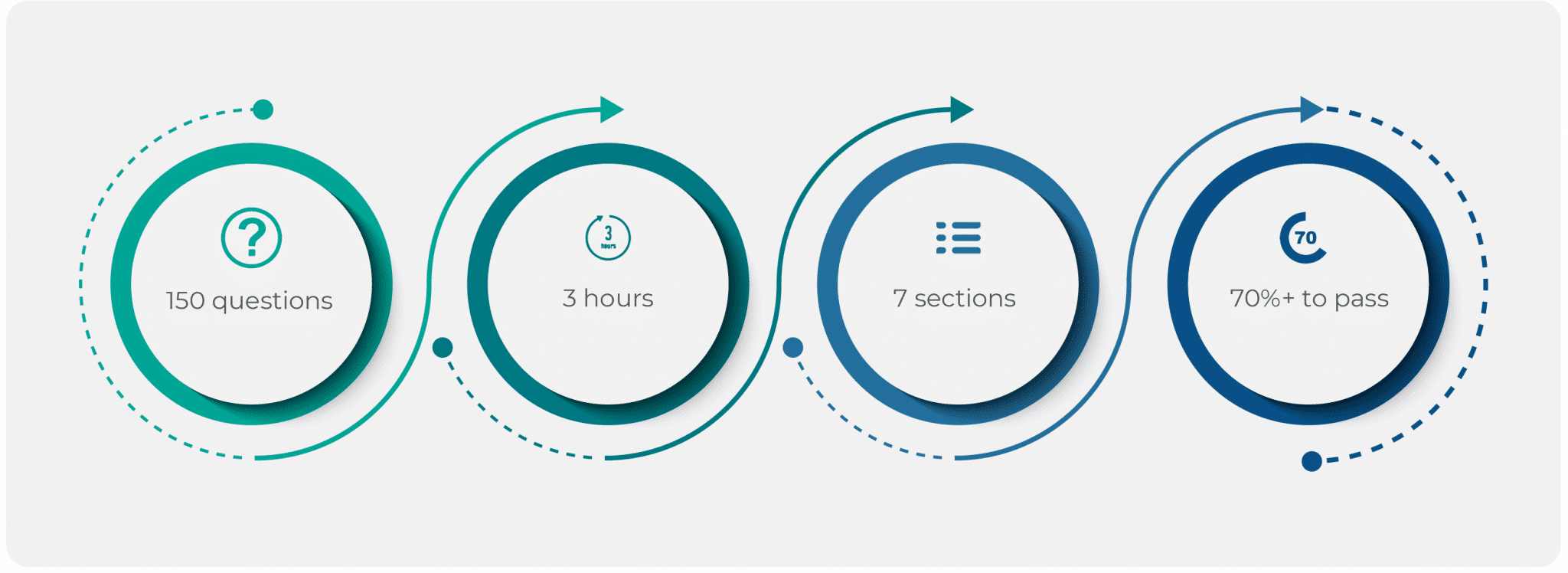
While the test is commonly referred to as the CRCST, you may also see the test referred to by these alternate names:
CRCST Certification Test
Certified Registered Central Service Technician test
IAHCSMM CRCST Test
Sterile Processing Technician Test
Sterile Processing Department Test (SPD Test)
Central Sterile Services Department (CSSD Test)
HSPA CRCST Test
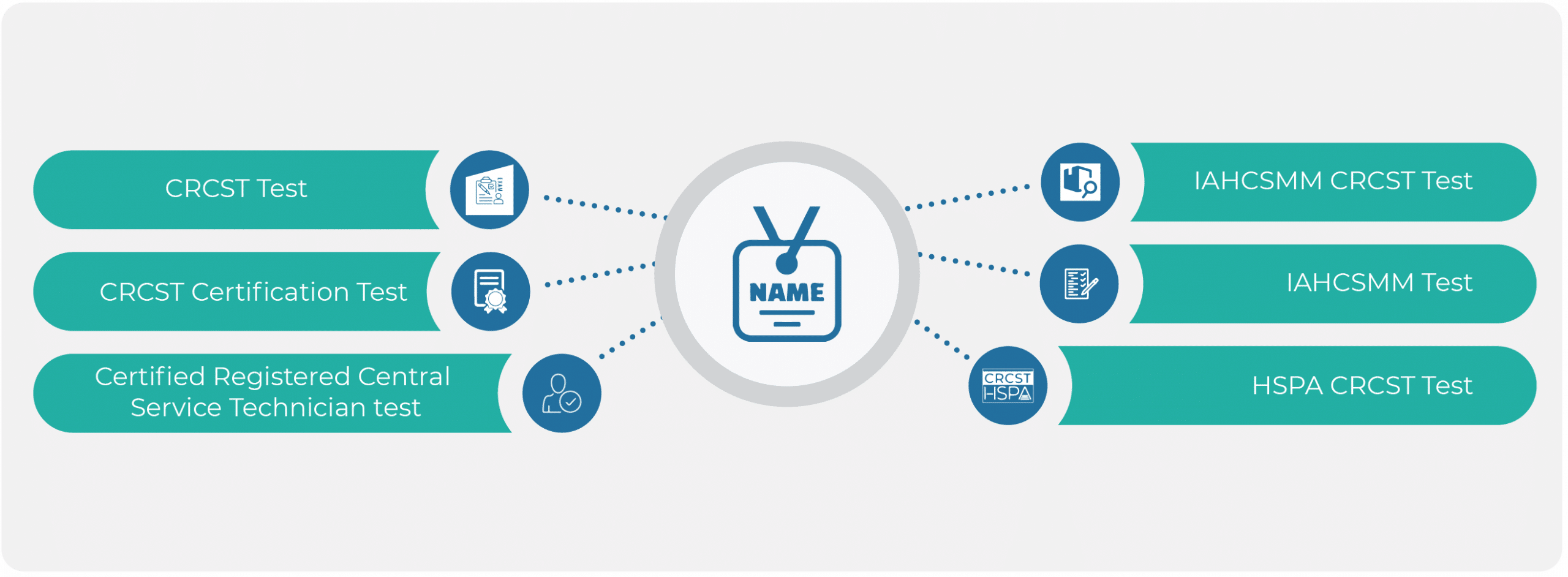
After submitting your application to HSPA (formerly IAHCSMM), you will receive a letter authorizing you to take the CRCST test within 90 days. That 90-day period is your test eligibility period. You can schedule a test at the Prometric Testing Center of your choice. Tests are given based on availability, and it’s recommended that you schedule your CRCST test within the first 45 days of eligibility to ensure you can reserve a seat.
If you fail the CRCST test, you can retake it as often as you want until you pass. You must apply using the retake application that comes with your examination report, wait 6 weeks between attempts, and pay $140 for each attempt.
As mentioned, in addition to passing the test you must have 400 hours of experience to receive your certification. Those hours are broken down as follows:
Decontamination – 120 hours
Preparing & Packaging Instruments – 120 hours
Sterilization and Disinfection – 96 hours
Storage & Distribution – 24 hours
Quality assurance processes – 24 hours
Equipment – 16 hours
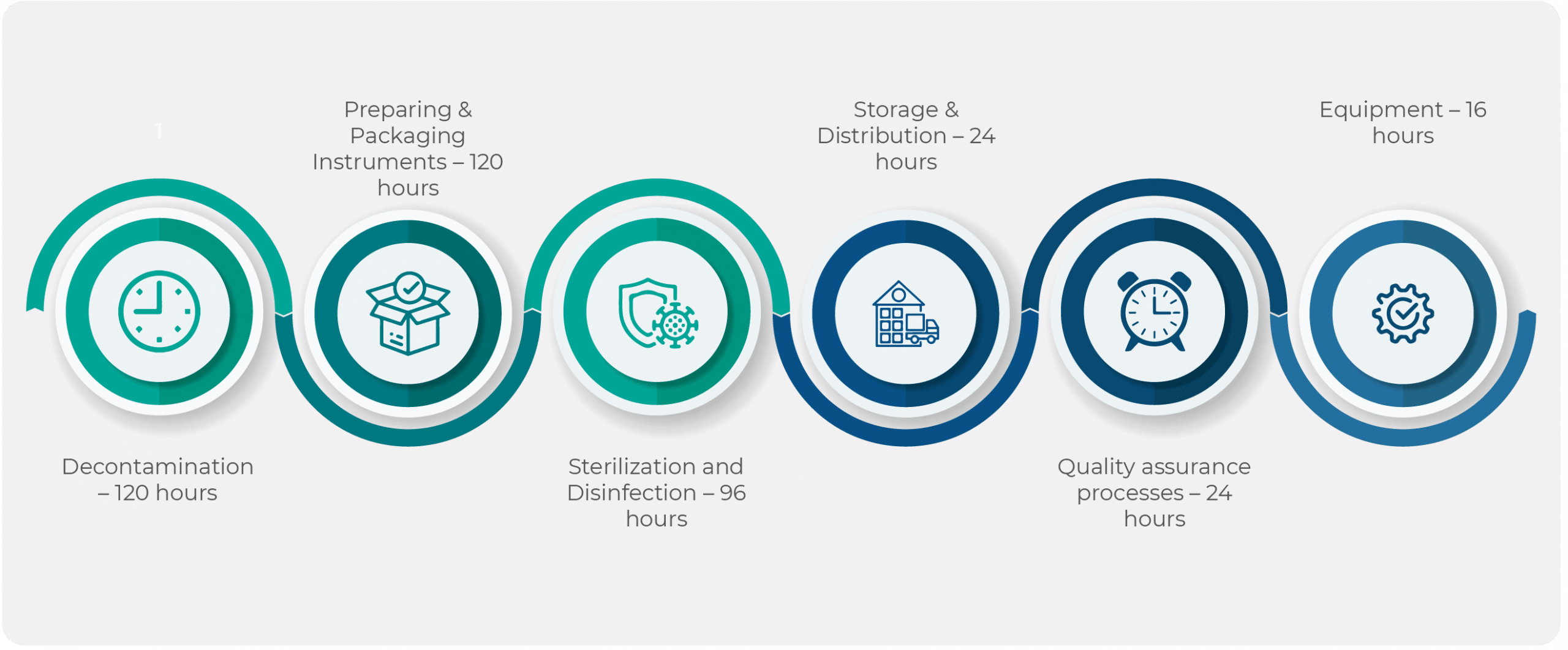
There are 150 questions on the HSPA CRCST test. Of those questions, 125 count toward your score, and the other 25 are unscored. The unscored questions are randomly placed throughout the test, so you need to answer all 150 questions.
Each correct answer is worth 1 point, and you need to get a 70% score to pass. There is no penalty for wrong answers, so if you don’t know an answer, your best bet is to eliminate options and make an educated guess.
Your CRCST test results are given at the testing center. Results appear on the screen following your completion of a survey, and a notification is emailed to you as well. When you pass the test, you receive a certification package within two weeks of completing the exam.
If you don’t pass the test, you will receive a report and information for retesting within one week. The report goes through each topic covered by the exam, and lets you know how you performed in each section.
This chart shows the Pass/Fail scores of CRCST test takers from 2015-2019. In 2019 the test had its highest pass rate, with 77% of test-takers passing. In contrast, the pass rate in 2016 was just 53%. Preparing for the test with as many CRCST practice tests as possible is bound to help you pass the test.

iPREP: Concise. Focused. What you need.
Yes, you can take the CRCST before you complete your 400 hours. However, if you have not completed your hours, you will only receive a provisional certification after passing the test.
How many questions are on the CRCST exam?There are 150 questions on the test. 125 questions count toward your score, and 25 questions are unscored.
Do I need to take a formal course before taking the CRCST?No, you don’t need to take any type of course. However, taking a course with practice tests will help you prepare for test day and give you a better chance at passing on your first attempt.
Which agencies recognize the CRCST certification?CRCST Certification is awarded by HSPA (formerly IAHCSMM) and is recognized by the American National Standards Institute (ANSI) and the National Commission for Certifying Agencies (NCCA).
What are the requirements for taking the CRCST exam?For full certification, you must provide a supervisor’s documentation that you have completed 400 hours of hands-on training when you apply for the test. For provisional certification, you can take the test without any documentation, but you must provide documentation for 400 hours of hands-on training within 6 months of taking the test. If you do not do so, you will need to take the test again.
What is a passing score on the CRCST test?You will need a 70% to pass the test.
If I fail the CRCST, can I take it again?Yes, you can retake the CRCST as often as you need until you pass. However, you need to wait 6 weeks between each test and pay $140 for each test.
How can I prepare for the CRCST test?Hands-on practice is the best way to prepare. You can supplement that with IAHCSMM practice tests and online courses, such as those offered by iPrep.
What topics are included in the CRCST test?There are seven main areas where you will be tested on. They are:
– Cleaning, Decontamination & Disinfection
– Preparation & Packaging
– Sterilization Process
– Patient Care Equipment
– Sterile Storage & Inventory Management
– Documentation and Record Maintenance
– Customer Relations
Before taking the test you will be required to pass through a metal detector. The only items you are allowed to have with you are your picture ID and a key to the locker that is available to you at the Prometric Testing Center.
Can I skip questions and come back to them later on?Yes, the navigation within the CRCST test allows you to come back to questions that you skipped.
How quickly will I find out if I passed the test?Upon completing the CRCST test, you will be asked to answer a survey. Your results will be on the screen once the survey is complete.
Follow these tips to improve your results.
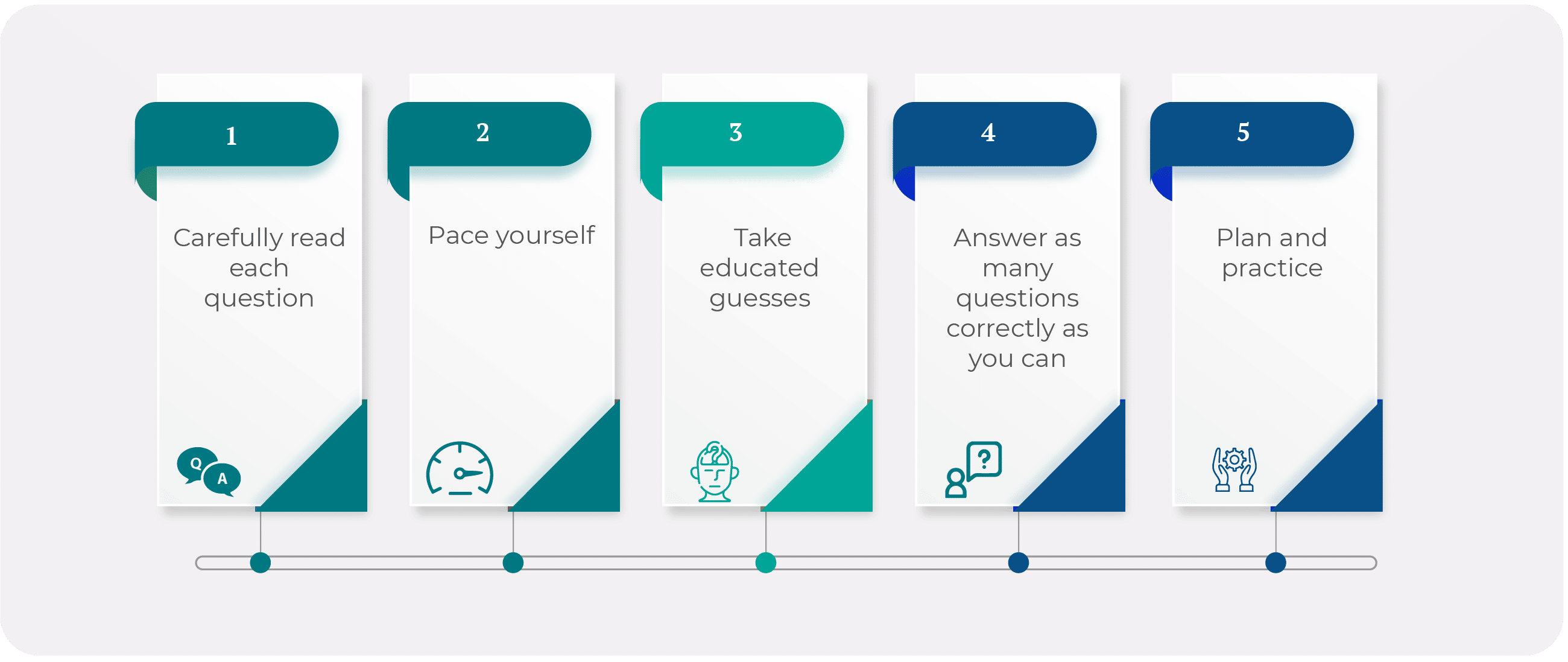
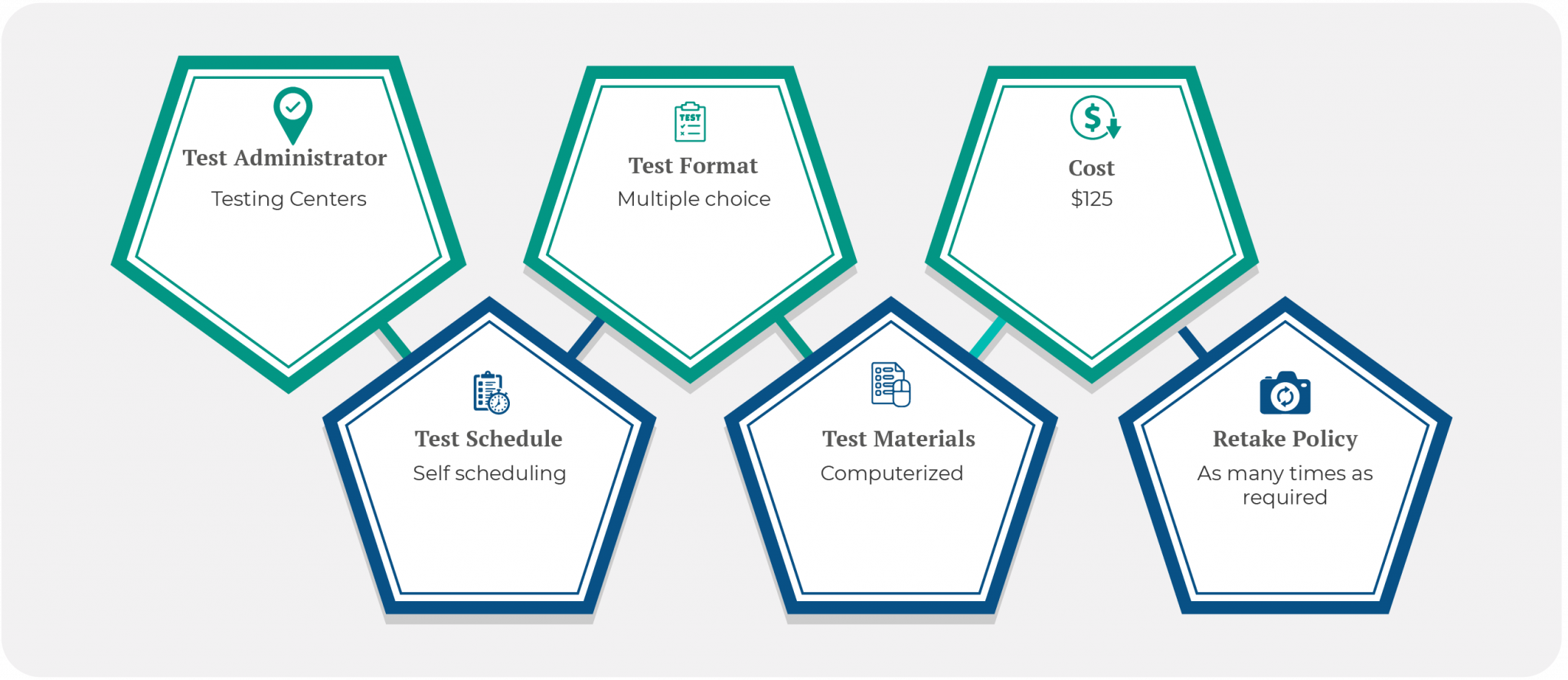
The CRCST test was developed by the International Association of Healthcare Central Service Material Management (IAHCSMM) group, which was renamed in 2022 as HSPA (Healthcare Sterile Processing Association). It is one of several certifications offered by the organization. Other certifications are CIS, CEER, CHL, and CCSVP.
Disclaimer – All the information and prep materials on iPrep are genuine and were created for tutoring purposes. iPrep is not affiliated with HSPA (IAHCSMM), Prometric Testing Centers, or any other company mentioned.
Free CRCST practice test: Get to know what the IAHCSMM CRCST will be like by practicing with these sample questions:
Sample Question 1 of 7
During the cleaning process of surgical instruments, a Central Service Technician notices some visible biofilm on a surgical scissor. What should the technician do next?
Correct Answer: C. Immerse the instrument in an enzymatic cleaner to break down the biofilm
Explanation:
Biofilm is resistant to regular cleaning, disinfection, and even sterilization processes. Thus, when biofilm is present, the instrument should be immersed in an enzymatic cleaner (C) to break down the biofilm. Wiping with a dry cloth (A) is not effective in removing biofilm. Proceeding to the disinfection process (B) or covering with a sterilization wrap (D) while biofilm is still present can lead to ineffective sterilization and potential cross-contamination.
Sample Question 2 of 7
While packaging a set of surgical instruments, a technician notices that a hinge instrument is not opening and closing smoothly. What is the best course of action?
Correct Answer: C. Send the instrument for repair and continue packaging without it
Explanation:
When a hinge instrument is not functioning correctly, the best course of action is to send the instrument for repair and continue packaging without it (C). Lubricating the hinge and continuing with packaging (A) would not address the underlying problem with the instrument. Replacing the instrument immediately (B) might not be an option if an exact replacement is not readily available. Ignoring the issue (D) could risk patient safety and procedural efficacy.
Sample Question 3 of 7
A Central Service Technician discovers an inconsistency in sterilization records. What should the technician do first?
Correct Answer: B. Report the discrepancy to the supervisor immediately
Explanation:
If a Central Service Technician discovers a discrepancy in sterilization records, they should report the discrepancy to the supervisor immediately (B). This is because any errors in sterilization records can have significant consequences for patient safety. Discarding the records (A) could eliminate important information. Correcting the discrepancy on their own (C) may not be appropriate without first discussing the issue with a supervisor. Ignoring the discrepancy (D) could also lead to adverse consequences if the issue is not resolved.
Sample Question 4 of 7
You’re a Central Service Technician and while processing surgical instruments, you find that the biological indicator (BI) for the steam sterilization process has turned positive. What should be your immediate course of action?
Correct Answer: C. Report the incident, quarantine the load, and reprocess all items
Explanation:
A positive BI indicates that the sterilization process was unsuccessful. In this situation, the technician should report the incident, quarantine the load, and reprocess all items (C) to ensure patient safety. Simply running the sterilization cycle again (A) or using a chemical indicator to confirm the result (D) would not adequately address the potential for non-sterile instruments. Discarding the BI (B) ignores a serious process failure.
Sample Question 5 of 7
In a situation where a department staff member has delivered contaminated instruments without adhering to proper protocol, what is the first step a Central Service Technician should take?
Correct Answer: D. Communicate with the staff member about the protocol breach and its potential implications
Explanation:
While it may seem logical to take immediate action such as returning the instruments or sterilizing them, the first action should be to communicate directly with the staff member involved (D). This ensures that the person is made aware of the breach, understands the potential implications, and can take corrective action.
Sample Question 6 of 7
What is the most critical factor to consider when choosing a location for sterile storage?
Correct Answer: C. The safety and sterility of the environment
Explanation:
While all these factors are important, the safety and sterility of the environment (C) is the most critical when considering a location for sterile storage. Sterile storage areas must provide a clean, dry, and well-ventilated environment that minimizes the risk of contamination.
Sample Question 7 of 7
A Central Service Technician is assigned to clean a recently used ventilator. Which of the following steps should the technician NOT take in this process?
Correct Answer: B. Submerging the entire ventilator in a disinfectant solution
Explanation:
While all parts of the ventilator should be cleaned and disinfected, submerging the entire ventilator in a disinfectant solution (B) could damage its electrical and mechanical components. Hence, this step should not be taken. All other steps (A, C, D) are necessary in the cleaning and maintenance process.
Boost your exam prep with these key concept flashcards.